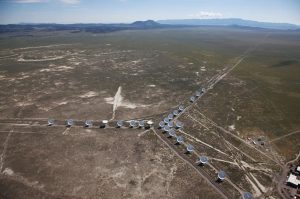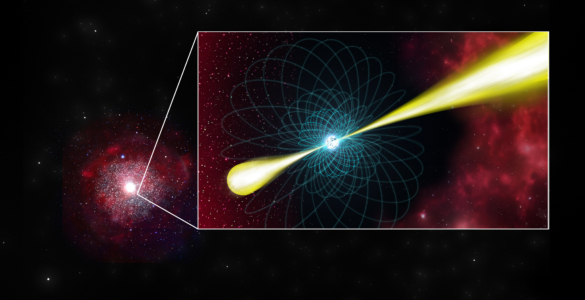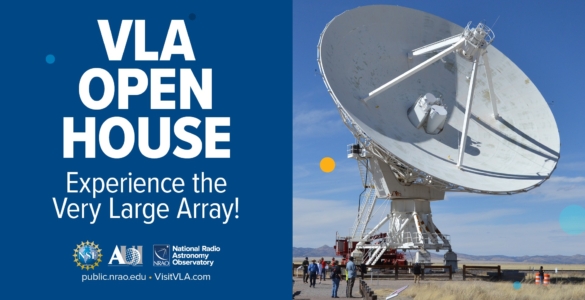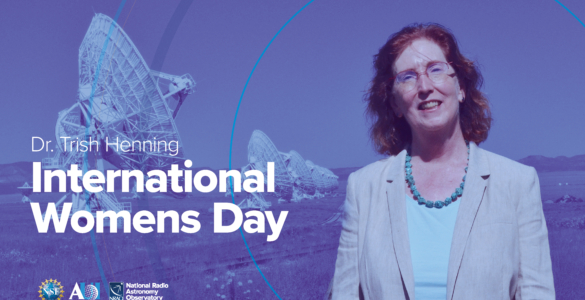Antennas
The antennas and transporters of the Very Large Array were designed and built in the 1970s. Its 28 25-meter dishes are kept in excellent working condition, and their performance has not downgraded in the decades of their use.
However, modern advances in receiver and computing technology have catapulted over those years. Scientists here felt that an overhaul of the guts of the antennas and the installation of a fiber-optically fed supercomputer would turn the VLA into a state-of-the-art instrument once again.
Receivers
Each of the VLA’s 28 25-meter parabolic dish antennas use 10 receivers:
74 MHz Band 4 8 – 12 GHz X Band
327 MHz P Band 12 – 18 GHz Ku Band
1 – 2 GHz L Band 18 – 26.5 GHz K Band
2 – 4 GHz S Band 26.5 – 40 GHz Ka Band
4 – 8 GHz C Band 40 – 50 GHz Q Band
With the exception of Bands P, and 4, the receivers are supercooled to keep their materials and electronics from giving off any radio signals of their own that would swamp the weak signals we receive from space. The cryogenic pumps working constantly, thanks to electricity flowing to the antennas through their concrete pads.
Receiver Electronics
Combining the views of the antennas and their wide range of receiver frequencies requires a series of specialized electronics directly in the receiver rooms of each telescope.
To ensure that combined data align properly, an atomic clock signal gives the data from each receiver a highly accurate time stamp.
The incoming radio waves are mixed with this timing signal and amplified, then they are digitized for their travel down the fiber optic cables into the supercomputer.
The Array

A huge Y of double railway tracks extend across the Plains of San Agustin in central New Mexico (shown to the right). On a regular schedule throughout the year, the antennas are disconnected from their piers and gently lifted on the back of the antenna transporters. Drivers carefully haul the antennas along the tracks to new piers.
This changes the view of the array: the farther apart the antennas are placed from each other, the more detail they will see when their views are combined.
WIDAR
WIDAR
The supercomputer of the VLA is housed in its own Faraday cage-equipped room. This incredible instrument can perform 10 peta operations every second – 1×10^16 or 10,000,000,000,000,000 per second! This computer was designed and built by our partners at the National Research Council in Canada. They came up with a new method of combining data from our telescopes, called Wideband Interferometric Digital ARchitecture, or WIDAR for short.





